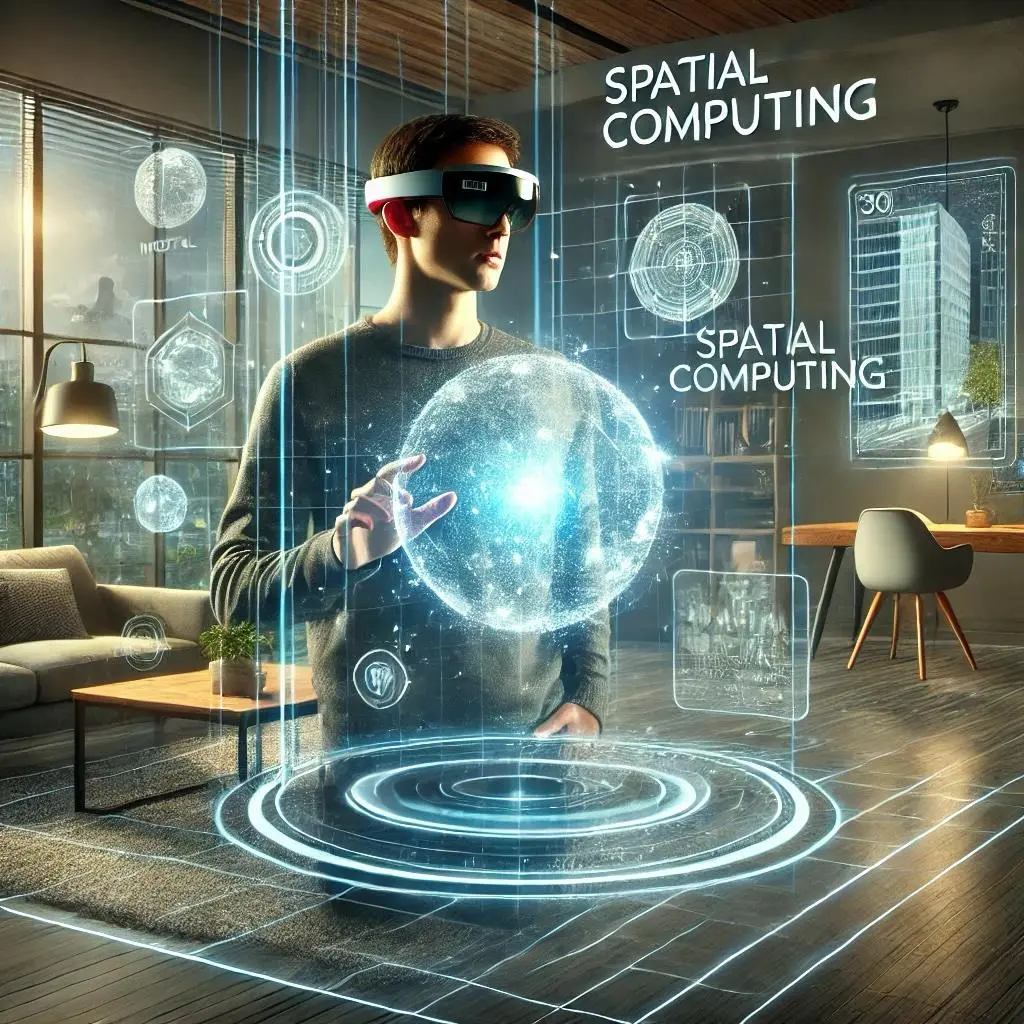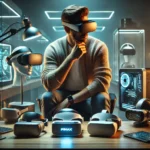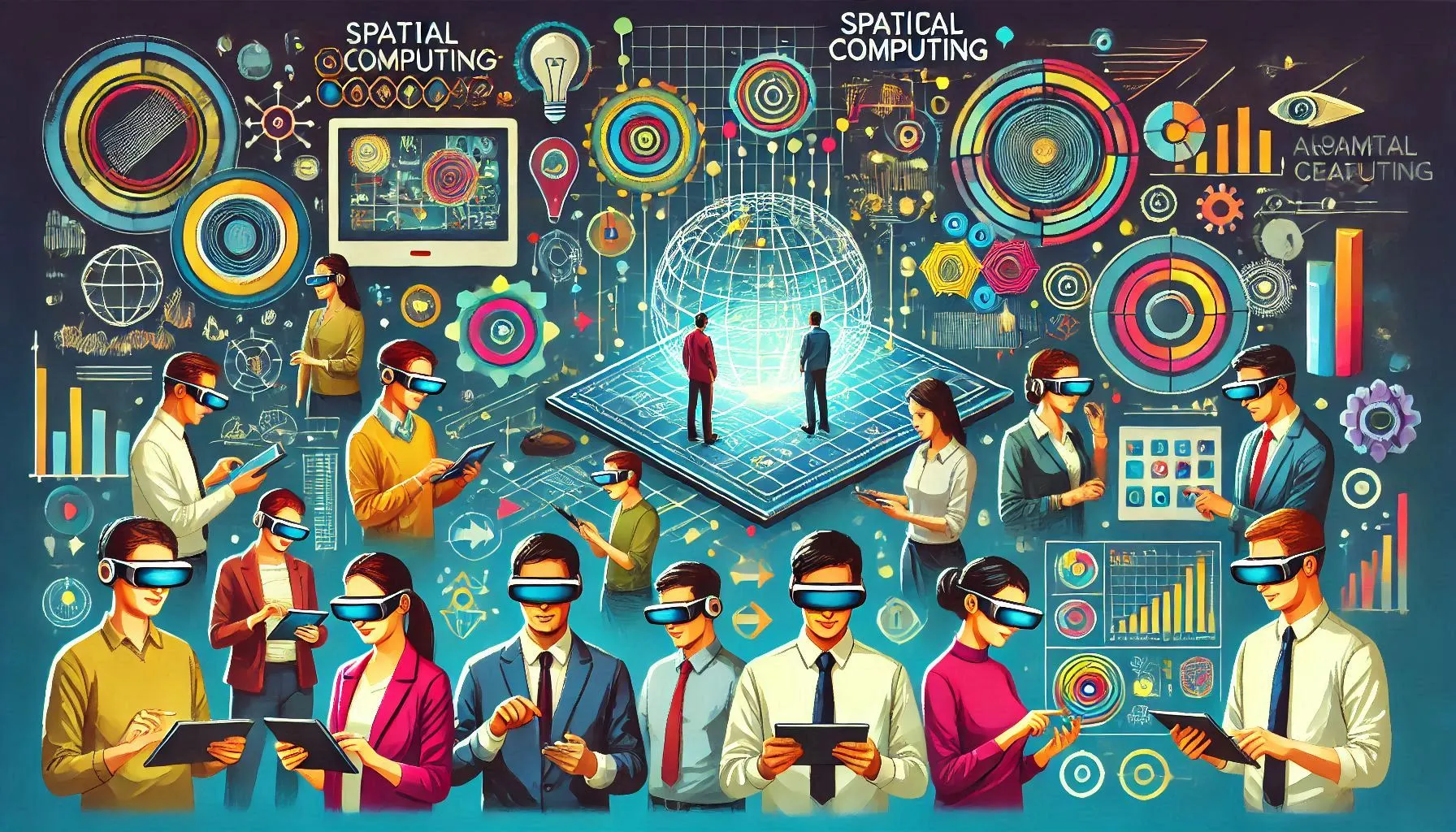
Imagine walking into your living room and finding a helper like Iron Man’s Jarvis. This helper can talk to you, knows how your room is set up, and interacts with your furniture and other things. It sounds like a fiction, right? But we are getting closer to making this real. Spatial Computing makes it possible to link the real world with the digital world. In this blog, we will learn about it. We’ll see if we can have our own “Jarvis.” Let’s find out!
What is Spatial Computing?
Spatial computing is a technology that combines the real world with the digital world and enables people to interact with computers in more interesting ways. It incorporates technologies like Augmented Reality (AR), Virtual Reality (VR), Mixed Reality (MR), and Extended Reality (XR). These add digital information to what we see in the real world. The devices such as Microsoft’s HoloLens and Apple’s Vision Pro headsets help users to see both the real world and digital objects together and interact with them.
How does Spatial Computing Works?
Spatial Computing works by integrating physical environments with digital technology to enable seamless interaction and manipulation of three-dimensional spaces.
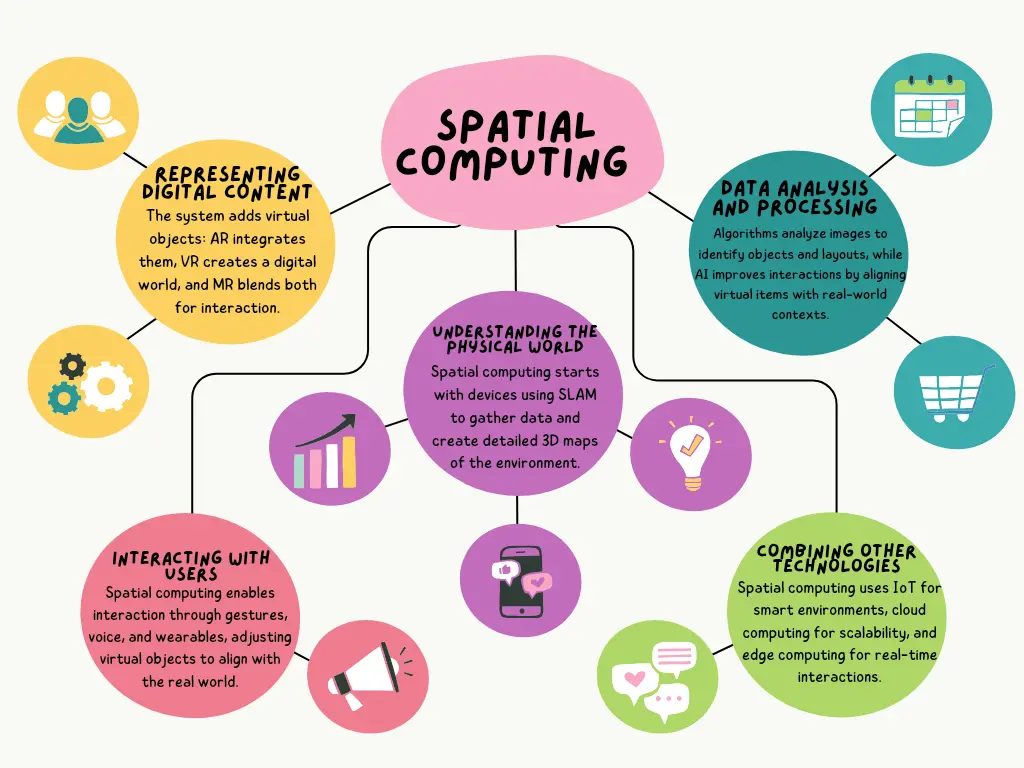
Applications of Spatial Computing
- Healthcare: It provides interactive simulations for students to practice surgeries or diagnose conditions. AR and VR, along with this, also help to visualize anatomy in 3D during procedures.
- Education: This could help students to study more efficiently about anything like monuments, places, etc. This can also increase the interaction between teachers and students with the help of virtual models.
- Manufacturing Industries: Spatial Computing is so helpful in this. The worker/designer can easily visualize the full structure of the machine and its different parts or also see its working. This would help them to design their products more systematically.
Spatial Computing vs AR and VR
| Spatial Computing | AR and VR |
| Spatial Computing means bringing the real and the digital world together by using advanced technologies like AR, VR, AI, IoT, and sensors to understand and work with 3D spaces. | AR is the presentation of digital objects in the real world, and VR is something in which the user experiences a fully digital environment. |
| It combines many technologies and components like IoT and edge Computing to have better interaction with the digital and physical worlds. | These focus only on visual interactions, where a person can see the digital objects but cannot interact with them. |
| This requires advanced algorithms for spatial awareness, AI integration, and real-time processing. | It’s easier than spatial computing to implement because its major focus is on graphical rendering and environment design. |
| It is the backbone of smart environments, autonomous systems, and connected ecosystems like metaverse infrastructure. | It would evolve in gaming, training, education, and many virtual interactions. |
Limitations
- It requires very advanced and specialized hardware like headsets, sensors, and very costly displays. Also, its software development needs advanced knowledge and frameworks.
- This technology has to be very accurate without any flaws or discrepancies, which is very challenging for the developers. The programming of the whole AI environment’s real-time interactions would require time and resources.
- It would access all private information, such as location data, blueprints of their places, or maybe their daily routines. Any vulnerability in its programming can lead to hacking, and all private data can be leaked.
Conclusion
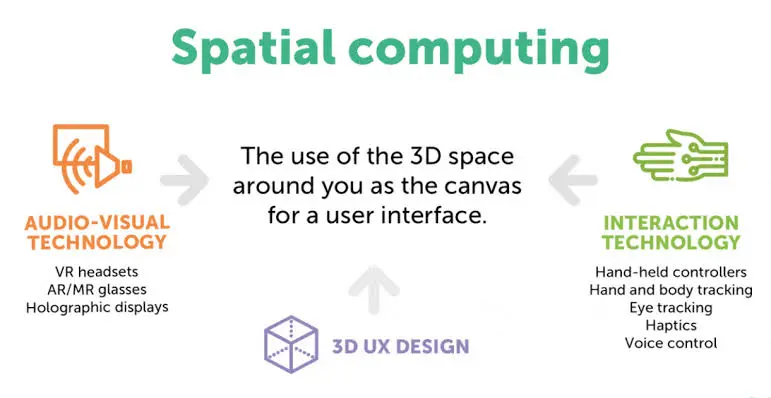
In summary, spatial computing is a leading new technology that mixes the digital and real worlds. It is changing fields like healthcare and education and creating smart environments. There are still some problems, like high costs and privacy concerns, but advances in spatial computing are making what used to seem like science fiction a reality. So, how soon will you be ready to have your helpful assistant, like Jarvis? The future is near!

